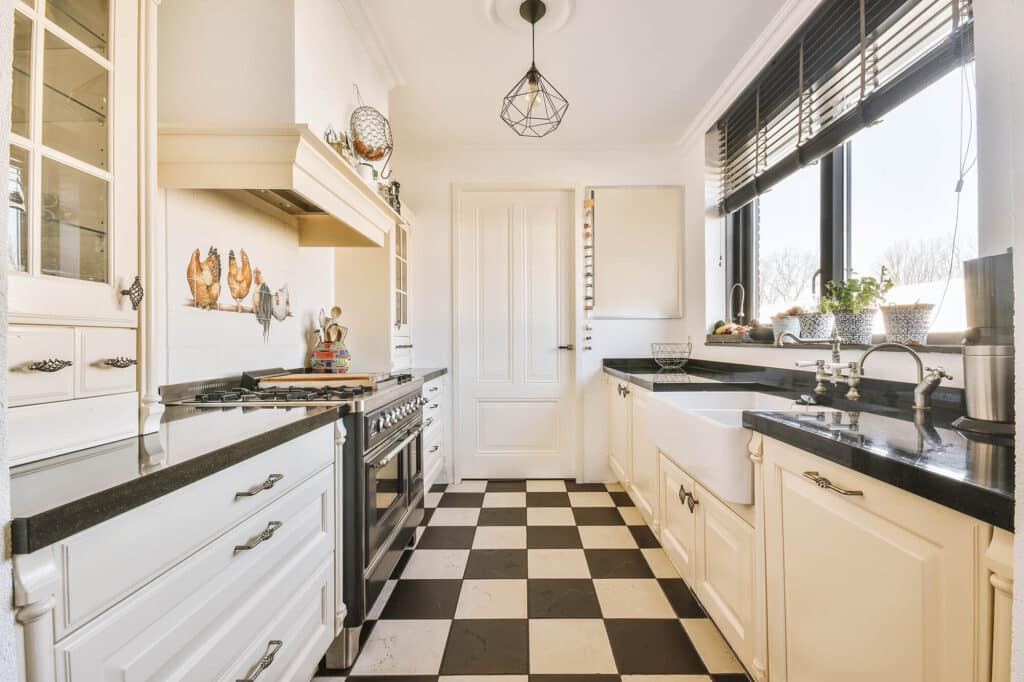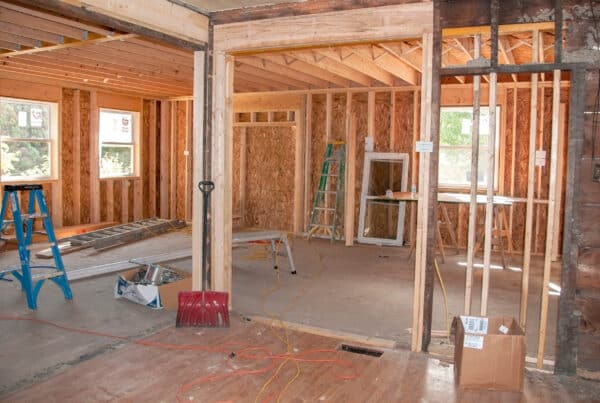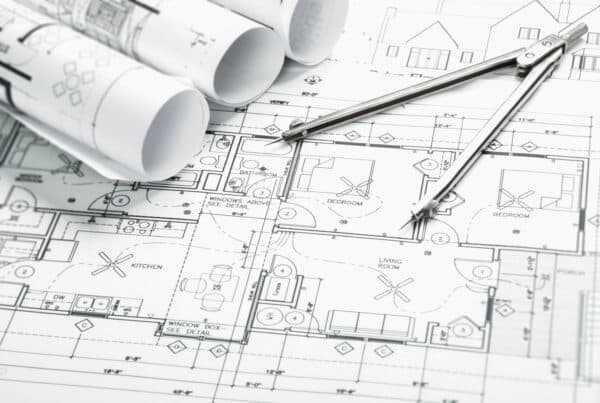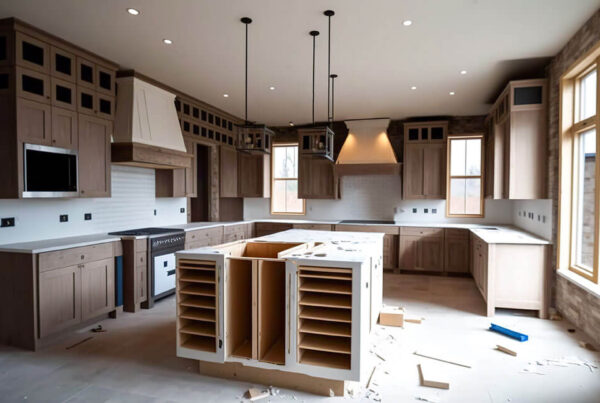Planning a kitchen layout is a crucial step in any home renovation project, especially when it comes to creating a space that is both functional and aesthetically pleasing. Whether you’re embarking on a Dallas kitchen remodel or revamping your space in Plano, Richardson, or McKinney, TX, there are several key factors to consider to ensure your kitchen layout meets your needs and lifestyle. In this guide, we’ll walk you through the process of planning your dream kitchen layout, from assessing your needs to implementing and testing your design.
Key Takeaways:
- There are benefits or ROI on your investment of remodeling your kitchen, anywhere from 80%-100%
- Planning a layout for the kitchen will mean a need-and-lifestyle assessment and setting budget and timeline, and lastly, getting inspired with some ideas.
- This entails that the individual has a grasp of the different kitchen layout possibilities, with the ability to prioritize functionality in planning for appliances and fixtures in strategic places.
- Understand the various kitchen layout options, prioritize functionality, and plan for appliances and fixtures strategically.
- Consider aesthetics by choosing materials and finishes, incorporating lighting, and adding personal touches.
- Seek professional advice and assistance when needed, and implement and test your design for optimal functionality and usability.
- Planning a kitchen layout involves assessing your needs and lifestyle, setting a budget and timeline, and gathering inspiration and ideas.
Benefits of updating a kitchen
Remodeling your kitchen can have a substantial impact on the value of your home, with various types of renovations yielding different returns on investment (ROI). For instance, minor kitchen renovations can often recoup a significant portion of the costs at resale. A study mentioned by iPropertyManagement found that minor kitchen renovations in the range of $5k-$15k can average a 100% ROI at resale. Homeowners who invested around $20,000 in kitchen renovations recouped an average of 82% of the cost when they sold their homes.
Other updates, such as exterior painting, can also be quite impactful. Exterior painting can be a DIY project for experienced painters and offer a substantial ROI. Roof replacements have been noted to have a 100% ROI, adding to the energy efficiency of a home through heat retention.
Moreover, replacing doors and windows for energy efficiency is key. Energy-efficient windows can even qualify for a tax credit, and modern doors and windows are more likely to be compatible with smart home technologies.
However, it’s also crucial to consider market variations. What might have a high ROI on a national level may differ in your local area. For instance, in some markets, kitchen and bathroom improvements yield the highest ROIs, while luxury remodels often do not recoup their costs.
For detailed figures and deeper insights, consulting the “2021 Cost vs. Value Report” by Remodeling magazine or connecting with a real estate agent for tailored advice is advisable (HomeLight) (RubyHome) (
Consider aesthetics by choosing materials and finishes, incorporating lighting, and adding personal touches.
It would therefore be advisable to seek further professional advice and assistance where possible, further develop, and then field-test the design for optimal functionality and usability.
Assessing Your Needs and Lifestyle Before getting into the specifics of your kitchen design, take a step back and first look at your needs and lifestyle. Consider what the room is actually used for on any given day—trends in cooking, storage needs, and how people most naturally move through the space.
Do you love entertaining a lot, cooking, and the joy that comes with it? Do you have a growing collection of kitchen gadgets and therefore require ample storage space for these gadgets? Is the kitchen the center of all activities in your home, bringing members of your family together, and has it also served as the focal point of many gatherings for
A kitchen layout can be customly designed towards what one specifically wants and needs, taking into consideration the understanding of his or her unique needs and lifestyle.
Understanding Your Cooking Habits: Think about your habits and preferences in the kitchen: would you prefer to have your cooking experience be alone or with friends? Would it be comfortable for more than one cook to be at work on the culinary assignments at the same time? Consider your kitchen layout in relation to the style and flow of your cooking.
Evaluating Storage Requirements:
Access storage needs according to the amount of space that would be needed for the cabinets and pantries. This should take into consideration the kind of family one has, how big it is, cooking habits, and the kind of equipment they will need in storing their items. Maximize storage efficiency by the use of pull-out shelves, drawer organizers, and vertical storage solutions.
Considering Traffic Flow:
Think of it like a flow of traffic within your kitchen where you would want to optimize the layout for no bottlenecks but always better accessibility.
Consider key elements, such as placement of entrances and exits, appliances, and fixtures, and the set-up of work zones. Come up with a layout that will certainly ease the flow and movement of traffic in the area. Setting a Budget and Timeline Determine the budget and time frame with consideration of your needs and lifestyle. Determine how much you want to spend on the project and when you would like it completed with consideration to your needs and lifestyle. These are material costs, labor, permits, and all surprise charges that might come into place during the renovation. Clear budgeting and scheduling of design will avoid derailment of the project, excessive spending, or delays.
Gathering Inspiration and Ideas
Never allow yourself to be committed to a final layout for your kitchen until you have drawn lots of inspiration and ideas from a wide variety of sources. Visit the home design magazines and home improvement sections of newspapers at your local bookstore, and look around the local area for anything to do with kitchens. Create a mood board or a Pinterest board with all your favorite ideas and inspiring images. Use it for reference when planning the layout of your kitchen.
Examples that are collected from all kinds of sources will help you come up with something that truly feels as if it is reflecting your style and serving all your functional needs.
Understanding Kitchen Layout Options
In helping to figure out your kitchen layout design, here is a listing of general options with strengths and weaknesses. From that list, consider each so you know the differences in the layout options you have:
Single-Wall Layout:
Ideal for small spaces or open-plan layouts, it has all the appliances and cabinetry along the wall, maximizing efficiency of space.
Galley Layout:

The galley kitchen layout is found mostly in small kitchens, with two parallel walls of cabinets and countertops, thereby giving an efficient and compact working space.
L-Shaped Layout:
The L-shaped layout: Another common layout for medium to large sizes of kitchens. Basically, an L-shaped kitchen is one where the cabinets and countertops run along two adjacent walls of the kitchen, therefore forming an L configuration to maximize on corner space.
U-Shaped Layout:
It includes maximum storage and countertop space, including cabinets and countertops along three walls. Configuration is in the form of U, which provides a maximum space for both storage and work area.
Island Layout:
Perfect for open-plan layouts and larger kitchens, an island layout features a central island or peninsula that will give the user more countertop space, storage, and seating options.
Consider space, workflow, and the kind of look you want when picking the layout that best suits your kitchen.
Prioritizing Functionality
Besides aesthetics, functionality occupies one of the very important places in the planning of the kitchen layout. Consider making your kitchen area serve your practical needs in order to optimize efficiency, comfort, and space for storage.
Work Triangle – Optimizing Efficiency:
Arrange your main kitchen components—the sink, stove, and refrigerator—in a triangular layout, commonly referred to as the work triangle. In this way, it will reduce the distance of these important components and make you easily move from one to the other as you cook.
Ergonomics – Designing for Comfort:
Consider applying ergonomic principles in the kitchen design—right heights of countertops, storage at arm’s reach, and good lighting. Do not forget about convenience and usability to be able to have a kitchen in which you will love to work.
Storage Solutions – Maximizing Space:
Maximize storage space in your kitchen by incorporating efficient storage solutions like pull-out shelves, drawer organizers, and vertical storage options. You should consider all your storage needs and use every square inch of space that is there so that your kitchen remains organized, free from clutter. Planning for Appliances and Fixtures
The other very key determinant of the layout of your kitchen is the placement of appliances and fixtures. Other than these points, there are other factors that one has to consider while planning for the placement of appliances.
Refrigerator Placement: Position the refrigerator in an accessible place that will have to take food out for preparation and storage. Consider the door swing, other appliances, and most of the traffic flow in that space while finding the refrigerator.
Stove and Oven Placement: You can have a centrally located stove and oven in the middle so that everything else across the kitchen layout can be reached with less strain. When planning to fix it in, consider factors like ventilation, safety, and places where countertop spaces are required.
Sink Placement: Centralize the sink according to the recommended position within the kitchen layout, where one can easily access the water point for faster running of the food preparation and cleaning activities. Here’s a consideration that needs to come into place on the plumbing, the countertop, and where other work zones are situated, while deciding on the best spot for your sink.
Understanding Kitchen Layout Options
When designing the kitchen layout, you will come across various forms with their benefits and some attached challenges. Here are the most popular:
Single-Wall Layout:
The single-wall kitchen is ideal for a small space or open-plan layout, as all appliances and cabinetry are arranged along a single wall, thereby maximizing the efficiency of space.
Galley Layout:

Mostly found in a small kitchen, a galley design is two sets of parallel walls of cabinets and countertops, thus bringing forth compact and very efficient workspace coverage.
L-Shaped Layout:
One of the most sought-after options for medium- to large-sized kitchens, such as the L-shaped layout, is this type. The design is done by setting the cabinets and countertops between two adjacent walls, hence forming an L configuration in a bid to maximize the spaces in the corners.
U-Shaped Layout:
Running along the three walls of a U-shaped kitchen, it provides just enough space to work and store things, with maximum storage and counter space.
Island Layout:
Perfect for open-plan layouts and larger kitchens, an island layout features an island or peninsula in the center of your kitchen that gives additional countertop space, storage, and seating options.
Consider space constraints, workflow preferences, and aesthetic goals when selecting the right layout for the kitchen.
Prioritizing Functionality
Ensure that in planning for the kitchen layout, functionality should be given a priority over aesthetics. Make sure that you do all it takes to have an optimized efficiency and comfort, even storage space, when laying it out.
Work Triangle — Optimizing Efficiency:

In addition, the three chief fixtures in your kitchen—the sink, the stove, and the refrigerator—should be arranged in a triangular pattern called a work triangle. This spacing will make the distance between the key elements short; hence, you can easily move from one part to the other while cooking.
Ergonomics — Designing for Comfort:
The kitchen layout should be done according to ergonomic principles. The countertops should be of comfortable heights, the storage facilities easily reachable, and the lighting of the kitchen should be proper. Consideration of the designs for the priority of comfort and usability will certainly make your kitchen a very pleasurable one to work in.
Storage Solutions — Maximizing Space:
Maximize storage space in your kitchen with efficient storage solutions like pull-out shelves, drawer organizers, and other vertical storage options. Take into consideration the storage needs and make the best use out of every available inch to keep your kitchen looking spick and span, preventing clutter at all costs.
Planning for Appliances and Fixtures
This brings us to another very important part when planning the layout of your kitchen: the placing of appliances and fixtures. Let’s consider the points in relation to appliances.
Refrigerator Placement: Place the refrigerator conveniently between the food storage and food preparation areas. Consider the swing of the door, any appliances that may run into conflicts with door opening, and the traffic flow around the refrigerator when placing the refrigerator.
Stove and Oven Placement: Put the stove and oven right at the center of the kitchen layout for access and easy cooking. However, you should always think of ventilation, safety, and space in your countertop while deciding where your stove and oven will be placed.
Sink Placement: This is where the sink should be located, a central point that people can easily reach as they use the water from it, prepare food by it, and wash their hands after taking meals from it. The triangle work zone should be established, and there exists enough space in the kitchen for consideration in relation to the area and its relation to plumbing needs and countertop space in deciding where exactly in the kitchen to put the sink.
Dishwasher Placement:
Position the dishwasher close to the sink for ease of loading and offloading. Think about other things, like the plumbing required and space in the cabinets, and location in regards to traffic flow when deciding where to have your dishwasher put.
Designing for Aesthetics Style should be the epitome of layout creation in the kitchen besides functionality, to reflect your personal style and improve the entire look and feel of your house.
Consider the following in designing for aesthetics:
Choosing Materials and Finishes:
Select finishes and materials compatible with your preferred design style and expected aesthetics. For countertops, cabinetry, and floor coverings, materials should be of durable quality to give good service and add to the attractiveness of your kitchen.
Incorporating Lighting:
Lighting is an important point in the kitchen space for functionality and attractiveness. Combine ambient, task, and accent lighting to some important areas of your kitchen, as it helps light up your kitchen and brings it to life.
Discuss the key features, consider in detail three basic factors: natural lighting, overhead lighting, and under-cabinet lighting while framing the lighting design for your kitchen.
Adding Personal Touches:
Put your own stamp on it by adding things of a personal nature and decorations that really show who you are and your style. Add some wall artwork, planters, or decorative accessories to give life and character to that kitchen space.
Seeking Professional Advice and Assistance:
It is one of the projects that can give much satisfaction when done as a DIY project with much care and some level of expert advice or help. One may even consider hiring a general contractor or a kitchen designer to assist in wading through the thicket of the design process and ensure success in the end. They have the contacts, the know-how, and the resources to help you craft the kitchen you’ve always wanted.
Implementing and Testing Your Design:
Once you’ve finalized your kitchen layout, it’s time to implement and test your design. You will now work with the contractor of your choice to bring to fruition your vision, overseeing the execution of construction in reference to the layout done by plans. After finishing the design for your remodeling, give its functionality and usability a trial with a little time and make necessary changes where need be.
Creating Your Dream Kitchen Layout:
Generally, this is just a basic guide for planning the layout in a kitchen that must be given thought with care for your priorities, lifestyle, budget, and aesthetic preferences. Coming up with such a kitchen layout that is both functional and stylish involves needs assessment, understanding layout options, ensuring the functionality is the utmost priority, planning with regard to appliances, considerations for aesthetics, seeking professional advice, and implementation and testing of your design. Whether in Dallas, TX, doing a remodeling project, or Plano, Richardson, or McKinney, revamping the space with Rooster General Contractors in each step from the very beginning till the project is completed. All the assembly or replacement work is carried out with your faith in us to make the process easier and more manageable, ensuring a kitchen of your dreams, meeting your needs and exceeding your expectations.





